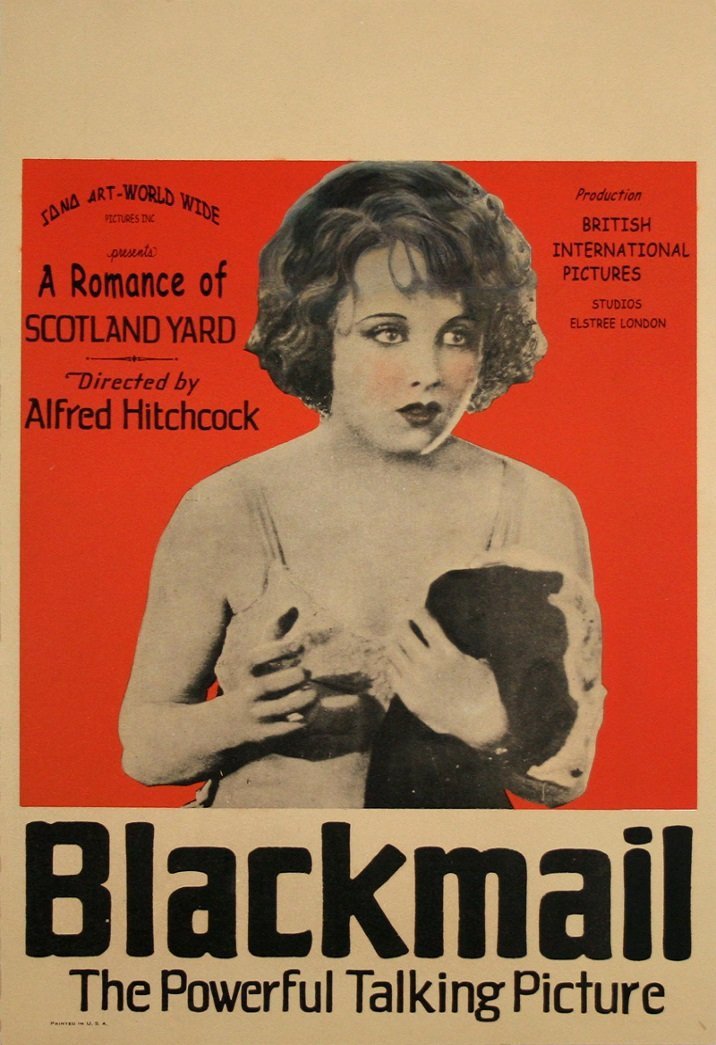Introduction:
“Blackmail” (1929), directed by the legendary Alfred Hitchcock, stands as a milestone in cinematic history. This silent thriller/crime film not only marks Hitchcock’s transition from silent cinema to the realm of talkies but also showcases his early mastery of suspense and innovative storytelling techniques. In this extensive review, we will delve into the narrative intricacies, character dynamics, cinematic brilliance, and lasting impact of “Blackmail,” shedding light on its pivotal role in shaping Hitchcock’s illustrious career.
Plot Synopsis:
Set against the backdrop of London, “Blackmail” follows the story of Alice White, played by Anny Ondra, a young woman entangled in a web of deception and crime. After a chance encounter with an artist named Crewe, Alice finds herself in a compromising situation that leads to a tragic event. Faced with the consequences, Alice becomes the target of blackmail, setting in motion a suspenseful narrative that explores guilt, morality, and the shadowy realms of the human psyche.
Character Dynamics:
“Blackmail” introduces audiences to a diverse array of characters, each contributing to the film’s psychological depth and suspenseful atmosphere. Anny Ondra’s portrayal of Alice White captures the turmoil and guilt of a young woman caught in a moral dilemma. Cyril Ritchard’s sinister Tracy, John Longden’s conflicted Detective Frank Webber, and Sara Allgood’s sympathetic Mrs. White add layers of complexity to the narrative, creating a cast of characters that heightens the film’s psychological tension.
Cinematic Brilliance:
Hitchcock’s directorial brilliance is evident throughout “Blackmail,” showcasing his early experimentation with suspenseful storytelling and visual techniques.
- The Power of Silence:
- “Blackmail” is a silent film that straddles the transition into the talkie era. Hitchcock ingeniously uses both silence and sound to enhance the narrative. The film’s iconic climax at the British Museum features one of cinema’s earliest uses of synchronous sound, marking Hitchcock’s innovative approach to the evolving cinematic landscape.
- Visual Storytelling:
- Hitchcock employs visual storytelling techniques to convey narrative nuances. From the use of shadows to the composition of shots, every frame contributes to the film’s atmospheric tension, showcasing the director’s early command of cinematic language.
- Themes of Guilt and Morality:
- “Blackmail” delves into themes of guilt and morality, prefiguring Hitchcock’s recurring exploration of psychological complexities. The moral quandaries faced by the characters, particularly Alice White, provide a compelling narrative core that resonates with audiences.
- The British Museum Climax:
- The climax at the British Museum remains a seminal moment in cinematic history. Hitchcock’s use of sound, visual composition, and suspenseful pacing creates an unforgettable sequence that exemplifies the director’s ability to captivate audiences through innovative storytelling.
Enduring Impact:
“Blackmail” holds a significant place in film history as a pioneering work that captures Hitchcock’s early experimentation with suspense and the merging of silent and sound cinema. Its impact extends beyond its historical context, influencing subsequent generations of filmmakers and shaping the evolution of cinematic language.
Critical Reception and Contemporary Perspectives:
Upon its release, “Blackmail” received critical acclaim for its innovative use of sound and suspenseful storytelling. In contemporary analysis, the film is celebrated for its role in Hitchcock’s oeuvre and its contributions to the evolution of cinema during a pivotal period.
Conclusion:
“Blackmail” (1929) stands as a testament to Alfred Hitchcock’s genius, capturing the essence of his early exploration of suspense and psychological complexity. As a milestone in cinematic history, the film not only represents a crucial juncture in the director’s career but also serves as a foundational work that laid the groundwork for Hitchcock’s later masterpieces. “Blackmail” remains a captivating journey into the silent thrills of early suspense cinema, a testament to Hitchcock’s enduring legacy as a trailblazer in the world of filmmaking.
